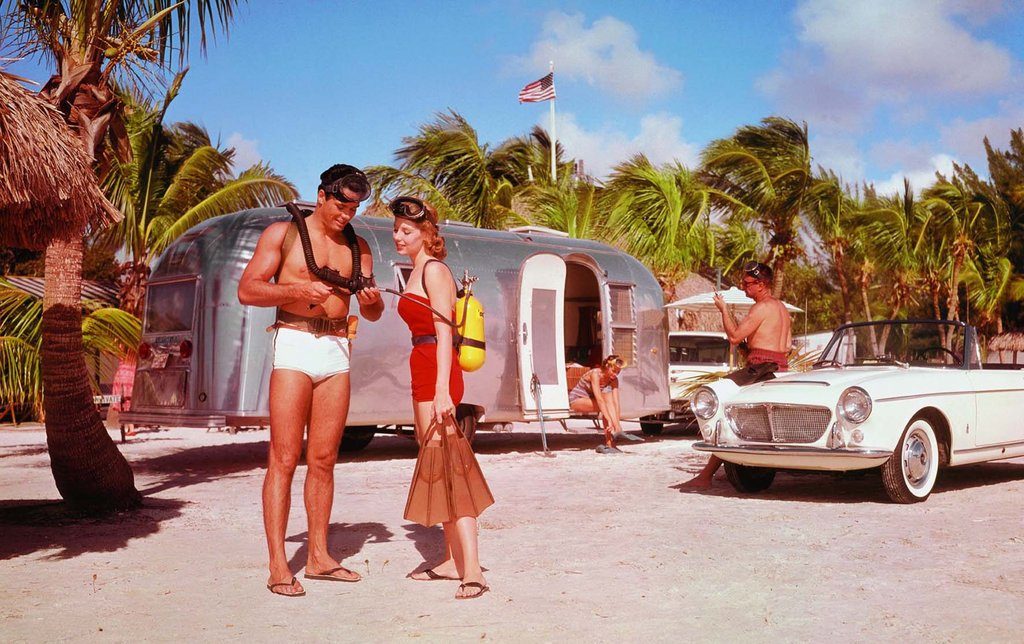On May 5th in 1955, a small herd of travel trailers were parked just outside of “Survival Town, U.S.A.” at a Nevada nuclear test site. These trailers were a part of Project 36, overseen by the Civil Effects Test Operations Office (an extension of the Civil Defense Administration), whose mission was to explore the ramifications of a nuclear explosion on travel coaches and emergency response vehicles.

Trailers used in Operation Teapot, May 1955 (Photos from Trail R News Magazine Article, July 1955)
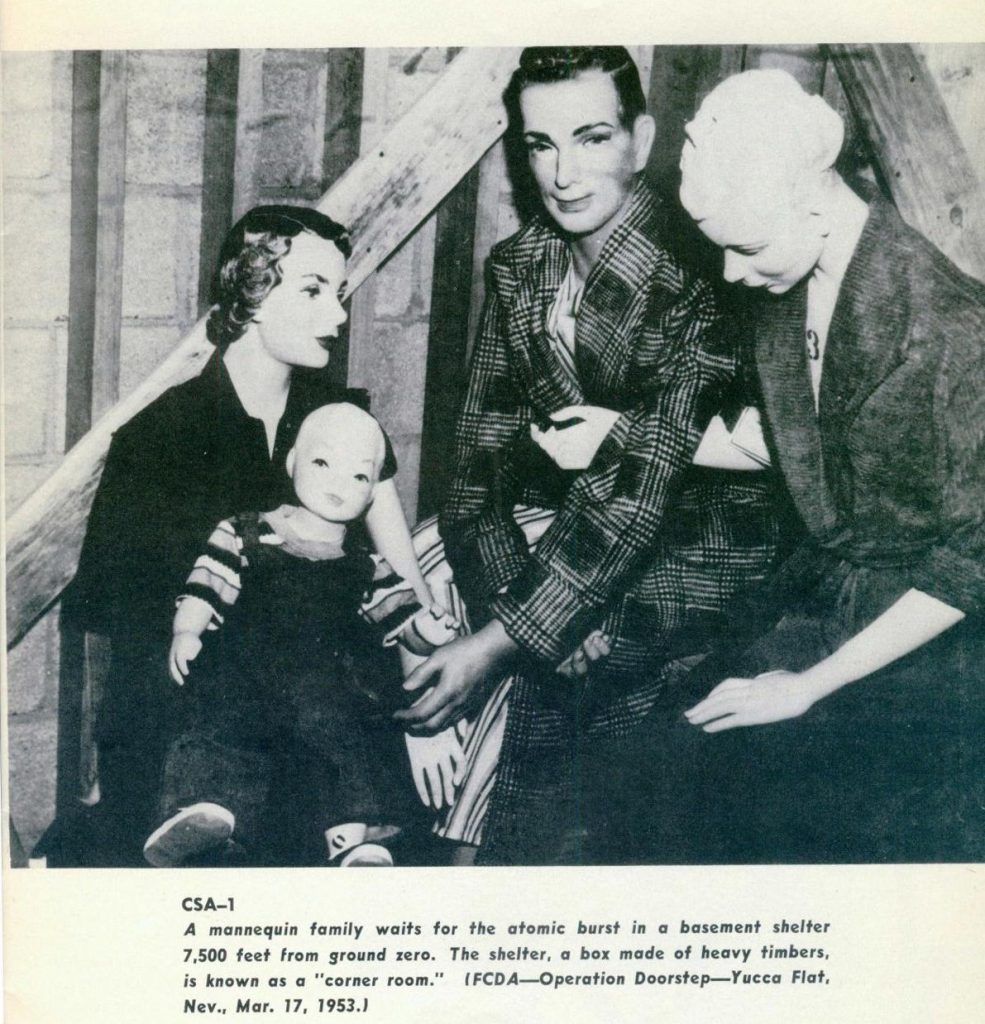
During the height of testing at the Nevada Proving Grounds, these sort of experiments were not uncommon- just two years prior, in March of 1953, Operation Doorstep had recruited passenger vehicles from car manufacturers across the United States to see how well they would fare in the direct path of a detonation. The automobiles were outfitted with gamma radiation badges and parked adjacent to variously constructed homes on “Main Street” in a veritable 3 Little Pigs scenario, except, in place of a wolf attempting to blow down the structures, in this story the houses, vehicles and mannequins propped inside them, would face off against the force of a 16 Kiloton atomic blast.
From J.C. Penney to AT&T, American companies were enthusiastic to support the Civil Defense mission. Among the 17 trailers selected to take part in Project 36’s Operation Teapot (aka “Operation Cue”) was one of American travelers’ most beloved brands, the Airstream. The history behind this unique caravan is a complicated but fascinating one, intertwined with the innovations of aircraft engineer, Hawley Bowlus.
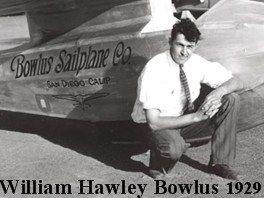
Bowlus, who had a hand in building- among other things- Lindbergh’s famed Spirit of St Louis, was an avid sailplaner who had been experimenting with and crafting these no-engine gliders from a very young age. The “Ranch” in California, where he manufactured his planes, lacked the right environment to actually fly them in, however, so Bowlus set out to find a solution. In 1934, in response to this predicament, he created the first riveted trailer- the “Road Chief”- from Duralumin, an early aluminum alloy.

The design was strategic and purposeful- to ferry the gliders with their wings stored alongside them, and be similarly lightweight and aerodynamic to the planes themselves. After some time, the structures evolved from purely mechanical transport and were modified to include living quarters in response to the pilots’ need to seek sturdier shelter in various climates between flights. The trailers were unique in their “monocoque” (French word for “shell”) design, integrating the chassis with the body, creating a single, load bearing hull- not unlike that of an airplane. The influence of Hawley’s background innovating aircraft was unmistakable in his RVs, and would eventually provide the groundwork for another industry visionary of his era.
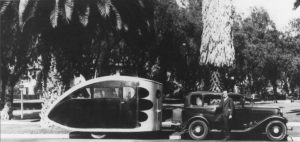
A short distance from where Hawley Bowlus was crafting his airborne and road-bound vehicles was another trailer manufacturer by the name of Wallace Merle “Wally” Byam. Byam, born in Oregon on the 4th of July in 1896 to humble beginnings, moved to California in his late teens to attend Stanford University. After graduating, he signed on with the Merchant Marines and shortly after, entered the publication business, printing and distributing various magazines through the advertising agency he co-owned with his then wife. In the early 1920’s, Byam published an innovative “Do It Yourself” guide- he initially sold to Popular Mechanics, then later printed in one of his own periodicals- on low-cost trailer building; It was an instant success.

Ostensibly, Byam’s familiarity with travel trailers stemmed from his long stays in shepherd wagons while working on his family’s farm in Oregon. Shepherd wagons, or “shepherd huts”, as they are also sometimes referred to, are the not-so-distant cousins of the modern day caravan. Typically built from cast iron and other forged elements, sporting curved corrugated iron rooftops, windows, a large door and iron wheels, they existed to allow farmers, mule drivers and sheep herders the ability to camp in the pastures near their flocks for extended periods of time in relative warmth and comfort.


Byam’s designs revolutionized the trailer industry- by lowering the floor between the wheels and adding several feet of height to the overall structure, it was now possible to stand upright and move about normally within the space. His success in selling his trailer kits and plans lead to his own small home-based Masonite trailer manufacturing business in California, which he incorporated in 1931 under the Airstream moniker.
Where Byam’s initial designs and Bowlus’ differed was in material, construction and most of all, marketing. Bowlus’s roots were in aircraft manufacturing, so although his trailer’s aluminum riveted exterior construction was superior to that of Byam’s Masonite curved style, Byam was not just selling vehicles- he was selling “The American Dream”- one of adventure, possibility and the unknown, and all customized to the individual purchasers’ needs. Eventually, mis-reading the market and over-manufacturing to a non-existent demand would tank Bowlus Trailers; Byam, on the other hand, was creating his trailers to spec, with a paying customer identified for each, so every trailer that was manufactured was financially backed.
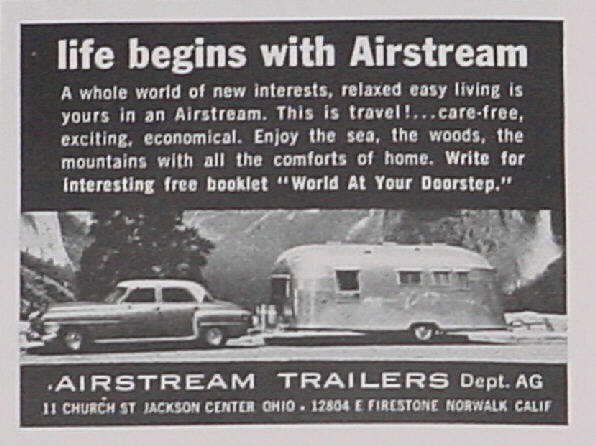
Hawley Bowlus, facing difficulty repaying his suppliers, shut down his trailer operations in 1936 to return to his work designing military gliders. Wally Byam, inspired by the hardy and practical construction of the Road Chief, discontinued his Masonite line and adapted the design to create the aluminum riveted, semi-monocoque Airstream “Clipper“. Though Byam experienced steady success for several years, he was not immune from the effects of the Great Depression; between the aluminum shortages during WWII and the dwindling demand for “luxury” purchases, he temporarily halted Airstream’s operations to work for Lockheed’s military aviation department.
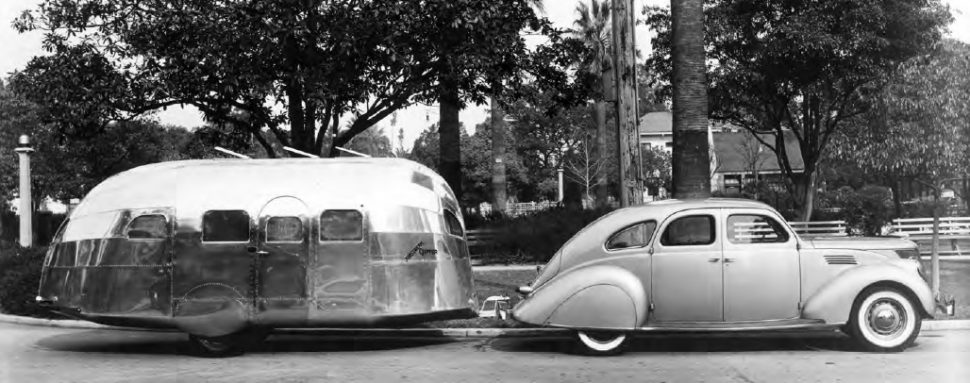

After the bombing of Hiroshima and Nagasaki, America oscillated between awe and anxiety regarding their nuclear potential as they entered the Atomic age. Escalating geopolitical tensions created the “Cold War” (so dubbed via an essay by George Orwell) prompting a plethora of propaganda from both the Soviets and the U.S., reinforcing each as singularly capable Superpowers.

“Bert the Turtle” was the iconic face of the Civil Defense ‘desk drills’ which encouraged school children to take cover and protect themselves from the effects of a potential bombing by hiding under their desks.
This international posturing, coupled with a healthy fear of all-out nuclear war, generated a significant cultural movement focused on the importance of the “readiness, self sufficiency and preparedness” of America’s citizenry. From school-house “Duck and Cover” drills, to the increased sale of in-home bomb shelters, and rise of volunteerism for local Civil Defense respondents, every effort seemed focused on converting fear of the bomb into proactive measures to strengthen the home-front.
One such aspect of this “readiness” philosophy was the ability to be mobile and agile in the event of an attack or evacuation. The government identified travel trailers as “important resources” in the event of a full-scale war. With the return of economic prosperity to the U.S. and this increased focus on the viability of mobile homes, RV sales sky-rocketed, creating a renewed demand and attention for the industry, overall.
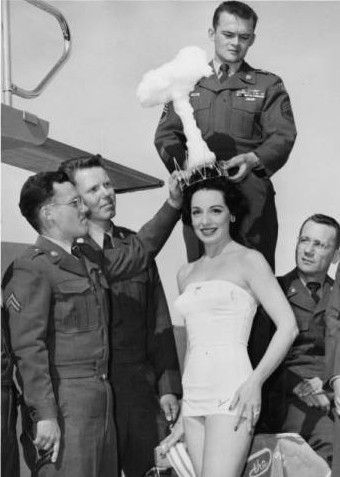
“Copa Girl Linda Lawson as “Miss-Cue” wearing an A-Bomb crown to illustrate the misfiring of the Operation Cue Bomb on May 1, 1955 “
After weathering the Great Depression and resuming production in the 1940s, the Airstream brand had become an iconic standout, synonymous with Americana alongside the likes of Coca-Cola and Marilyn Monroe. Due to it’s innovative design and market acclaim, it was selected by the Civil Defense Administration to participate in “Operation Teapot”. Operation Teapot (aka Operation Cue) was a multi-faceted military and scientific exercise, analyzing the overall impact of a nuclear explosion on everything from houses, to fabrics, to food and the electrical grid. Each element of the operation received an identifying number- nestled among them was Project 36– the combined effort between the U.S. military and the Mobile Homes Manufacturers Association, Mobile Homes Dealers Association and Travel Coach Association. The collaboration was no small undertaking, nor was it without significant cost- the total sum value of the trailers donated by the RV industry- which they dubbed as “an offering to the Great Bomb”- was around $75,000 (which equates to approximately $700,000 in 2019).
The significance of this goes beyond recognition of the Airstream’s hardiness in the face of an atomic blast- this was the first joint operation intent on educating the public about the realities of these attacks- Prior to this, the activities of scientists and the military in Mercury, Nevada had been mostly speculative, despite the visible mushroom clouds in the distance. Subsequently, this launch had an unprecedented media presence and fanfare surrounding the very public display- even more so due to the government’s strategic engagement of other popular brands to join in.
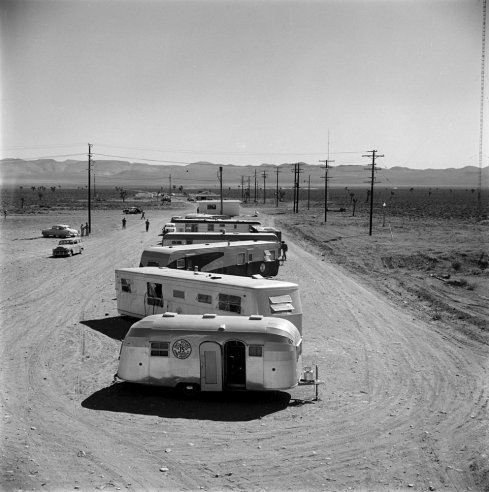
Airstream #15 in line with the other RVs selected to be tested at 10,500 ft from the epicenter of the 29 kiloton blast
After several delays due to weather and engineering concerns, the test commenced on May 5th, 1955. Members of Project 36 staggered the selected trailers at 10,500 ft and 15,000 ft, respectively, from the epicenter of the 29 kiloton blast in an effort to prove their overall resilience and their potential as temporary housing for those displaced by an attack. The distances were selected to simulate low-blast pressure areas anticipated in suburban zones adjacent to key targets.
The ensuing results of Project 36’s experiment thrilled the RV industry, especially the Airstream corporation, whose Test Unit #15 vehicle (a 22 ft single axle aluminum riveted model) suffered essentially no structural damage from the blast, aside from a small indent in the rear of the vehicle and next to no interior damage from the shock wave (a full account of the results is documented in the report by the Civil Effects Test Group in the images below, not accounting for radiation, of which statistics were unmeasured).
Airstream iconography and alignment with the Atomic Age persists, even today. The exterior aesthetics, which remain relatively unchanged from the trailer utilized in Operation Cue continue to echo a bygone era romanticized by many as the penultimate representation of America at it’s best. As the country moves, once again, into uncertain times, it’s likely those seeking mobile dwellings will turn to the brand that survived the blast.
